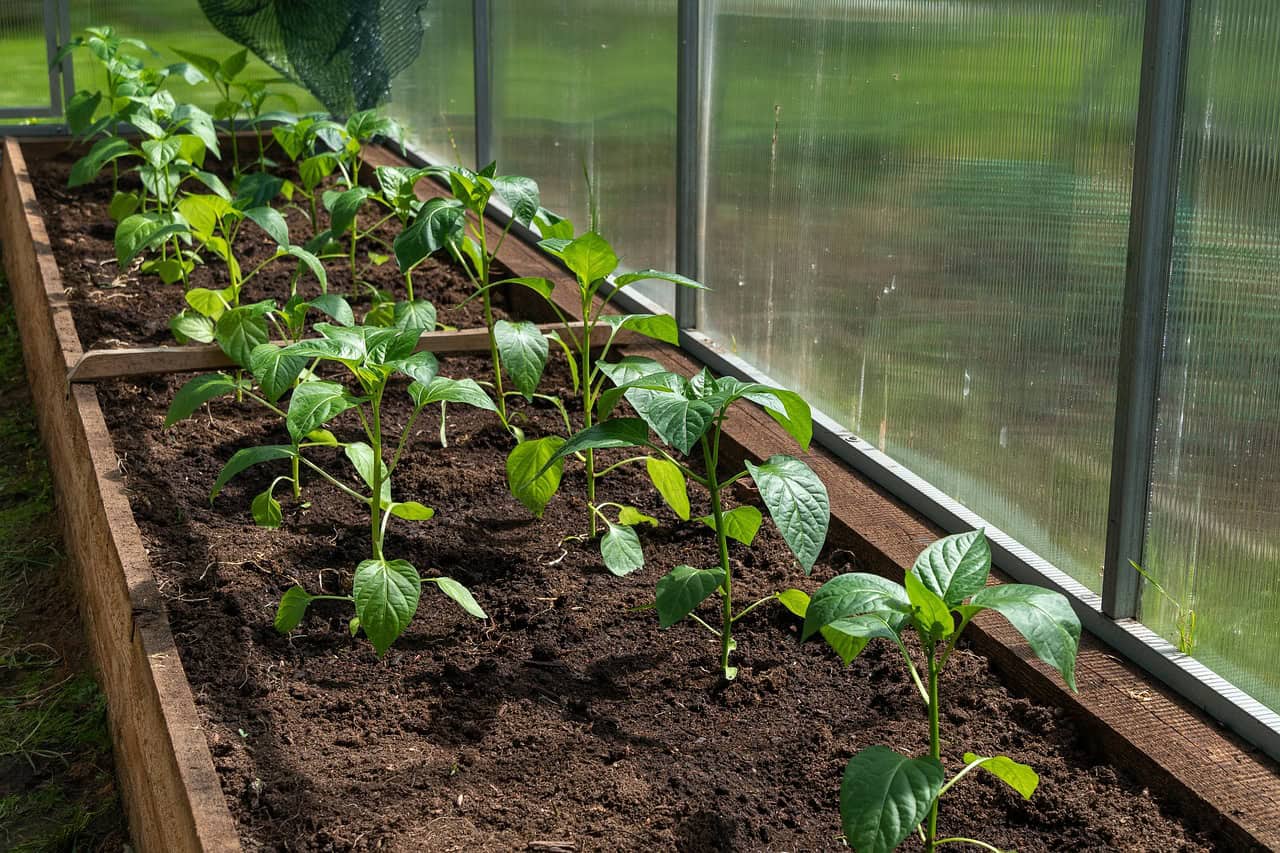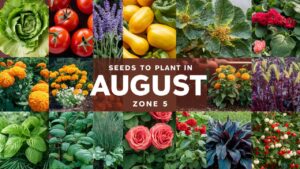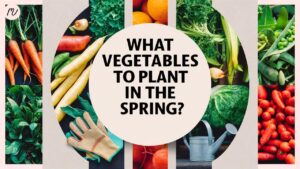As winter sets in, many gardeners think it’s time to hibernate, but a greenhouse can be a thriving hub of fresh produce even in the cold months. Discover how to grow a bountiful garden all year long. Ready to unlock the secrets of winter greenhouse gardening?
Arugula
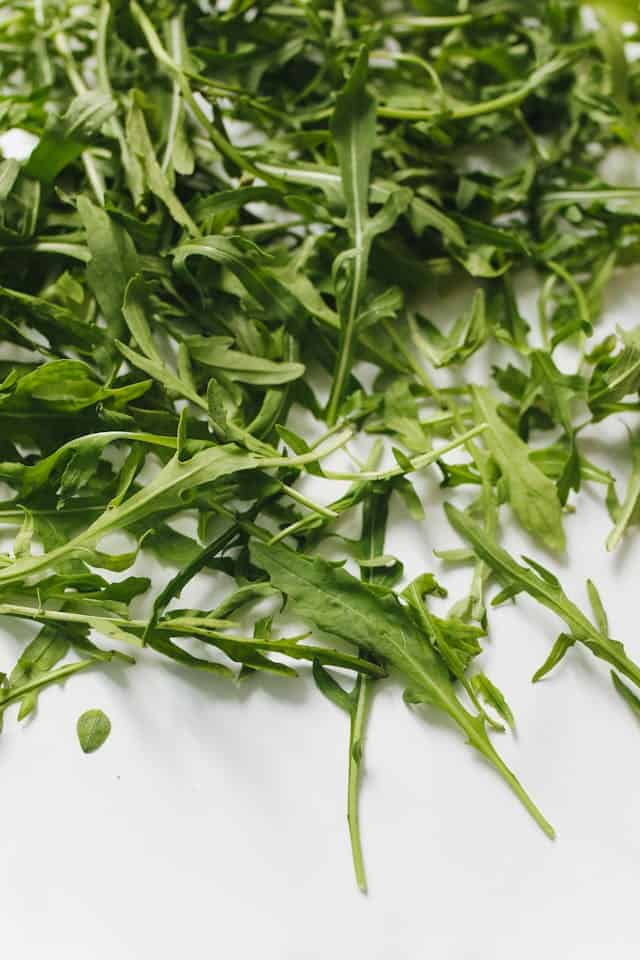
Arugula, a peppery leafy green, thrives in cool temperatures, making it an ideal candidate for winter greenhouse production. This nutrient-dense plant can be sown directly into the soil or in containers, flourishing even as temperatures drop to near freezing. When grown in a greenhouse, Arugula benefits from a more controlled environment, which helps prevent bolting—a common issue when temperatures fluctuate.
One of the most appealing aspects of Arugula is its rapid growth rate. Under optimal conditions, seedlings can emerge within just a few days, and mature leaves can be harvested in about three to four weeks. This allows for multiple harvests throughout the season, providing fresh greens to enjoy for salads or culinary dishes. Additionally, the mild winters in most regions mean that with adequate sunlight and protection, Arugula can be harvested well into late winter, making it a reliable choice for winter gardeners.
Furthermore, Arugula can be interplanted with slower-growing crops, maximizing greenhouse space. Its ability to thrive in less-than-ideal soil and with minimal maintenance makes it a practical option for both novice and experienced growers.
Beets
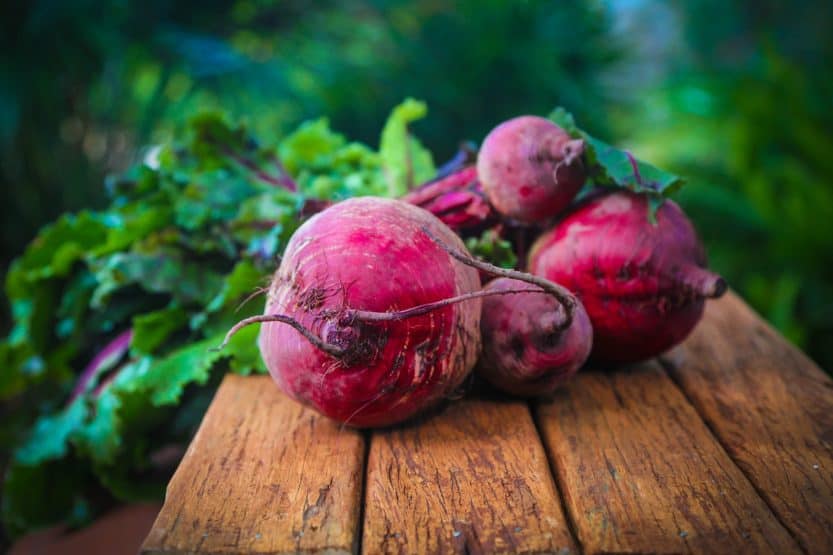
Beets are another fantastic option for winter greenhouse growing. Known for their vibrant color and nutritional benefits, such as being rich in fiber, folate, and antioxidants, these root vegetables not only satisfy the palate but also contribute to a healthy diet.
When growing beets in a greenhouse during the winter, it’s important to offer ample light. Sometimes supplemental lighting may be necessary, especially in regions with shorter day lengths. Beets prefer temperatures between 50°F and 75°F, making a greenhouse a perfect sanctuary to protect them from frost and keep them thriving.
There are several varieties of beets to consider, ranging from the traditional red beet to golden and striped varieties like Chioggia. This diversity allows for creative culinary endeavors, including roasted beet salads, pickled beets, and beautiful platters featuring an array of colors. What’s particularly exciting about winter-grown beets is their depth of flavor, often enhanced by the colder temperatures, which can sweeten the roots.
Moreover, beets can be harvested at different stages; you can choose baby beets for tender, sweet flavor or allow them to mature for a heartier root. This flexibility allows gardeners to tailor their crops to their preferences and timeline.
Belgian Endive
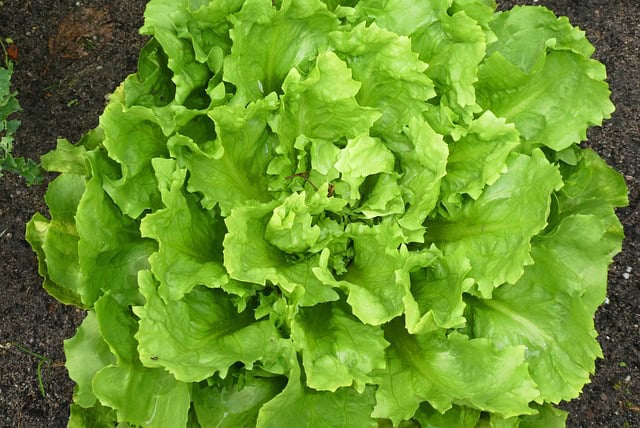
Belgian Endive is a unique addition to any winter greenhouse garden. This chicory family member is known for its crisp texture and slightly bitter taste, often featured in salads and gourmet dishes. What sets Belgian Endive apart is its double-growing method, which requires both a rooted phase and a forcing phase, making it an intriguing challenge for gardeners.
Initially, Belgian Endive is sown in the fall, and once established, the roots are harvested, trimmed, and then stored in a cool, dark place. After a chilling period of approximately one to two months, the roots are then forced into growth under warm, dark conditions—a process that takes place inside the greenhouse. This results in the tender, blanched endive shoots that are prized for their culinary uses.
The winter months provide the perfect opportunity for Belgian Endive cultivation due to its hardiness and ability to withstand cold temperatures. When grown in a greenhouse, the establishment of the plants and the forcing process can be precisely controlled, ensuring successful growth. The resulting leaves are a delicacy, often used in sophisticated dishes or simply enjoyed raw with a vinaigrette.
Bok Choy

Bok Choy, a member of the cabbage family, is renowned for its crisp texture and mild, sweet flavor. This versatile Asian green produces lush leaves and tender stems, making it a popular choice for stir-fries, soups, and salads. When grown in a greenhouse during winter, Bok Choy benefits from the protection against frost while still enjoying sufficient light.
Ideal growing temperatures for Bok Choy range from 60°F to 70°F, which suits the average conditions in most greenhouses. Bok Choy can be seeded directly into the soil, with quick germination taking place in as little as four days. The plant matures rapidly, allowing for harvest in just six weeks for baby greens or approximately eight weeks for full-sized heads.
One of the key advantages of growing Bok Choy in a winter greenhouse is its resistance to cold temperatures. In contrast to some other leafy greens that may bolt prematurely, Bok Choy’s growth remains steady and slow-maturing, giving gardeners plenty of time for harvest. An added bonus is that the plant often produces better flavor when grown in cooler conditions, resulting in richer, more flavorful greens.
For a continuous supply, Bok Choy can be sown every few weeks. Its short growth cycle allows gardeners to stagger plantings, ensuring a consistent harvest throughout winter. Additionally, the plant attracts beneficial insects such as ladybugs, which can help control pests naturally.
Broad Beans
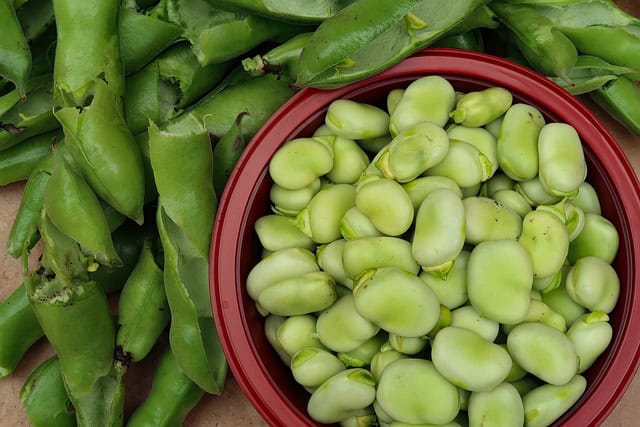
Broad Beans, also known as fava beans, are a fantastic choice for winter greenhouse gardening due to their hardiness. These legumes are not only nutrient-dense, providing a good source of protein, fiber, and vitamins, but they also enrich the soil with nitrogen, making them an excellent option for crop rotation.
Broad Beans can be sown in the greenhouse during late fall, especially in milder climates, or even during winter for an early spring harvest. They thrive best when planted in soil temperatures around 45°F and can withstand frosty conditions. The greenhouse environment helps to shield the young plants from harsh winter winds and extreme cold, promoting a stable growing environment.
One of the fascinating aspects of growing Broad Beans is their unique growing habit; they produce tall plants with beautiful, fragrant flowers. These flowers not only add aesthetic appeal to the greenhouse but also attract pollinators, which can be beneficial for other crops being grown during the winter months.
Harvesting begins when the pods are young and tender, typically 10 to 12 weeks after planting. The beans can be enjoyed fresh, used in various recipes, or dried for future use. Some varieties also yield edible young leaves, which can be harvested earlier in the season. Overall, Broad Beans not only contribute to an ecologically healthy greenhouse but also reward growers with a bountiful and nutritious crop.
Broccoli
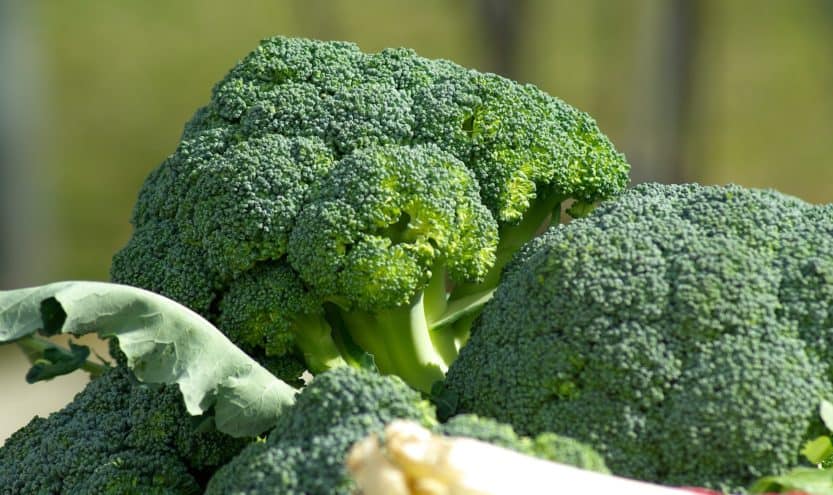
Broccoli is another winter greenhouse favorite that thrives in cooler temperatures and offers substantial culinary versatility. Recognized for its health benefits—from vitamins K and C to fiber—Broccoli is a staple in many kitchens, making it a wise choice for winter production.
In a greenhouse, broccoli can be started from seedlings or direct sown into the soil as early as late fall or early winter. The ideal conditions—cool air temperatures between 60°F and 70°F—enhance the growth of compact, dense heads. The winter greenhouse environment promotes robust growth while protecting the plants from pests and diseases often rampant in outdoor gardens during this season.
Maturing in about 70 to 100 days, Broccoli yields a single large head which can be harvested before the plants continue to produce smaller side shoots, extending the harvest period. This continuous yielding capability makes Broccoli not only a satisfying crop but also a practical one, especially for those looking to maximize their greenhouse output during winter.
Growers can take advantage of the greenhouse’s climate control, optimizing temperature and humidity for ideal growth. Additionally, choosing disease-resistant varieties makes it easier to cultivate broccoli during this season. The plants can be paired with companions such as carrots and onions, which help deter pests and improve overall yield.
Moreover, winter-grown broccoli is known for its superior flavor, often described as sweeter and more tender than that grown in warmer months. This distinctive flavor adds an extra layer of enjoyment to winter meals, whether it’s served steamed, roasted, or raw in salads.
Brussels Sprouts

Brussels Sprouts are wonderfully suited for winter greenhouse cultivation. Known for their distinctive taste and impressive nutritional profile, these tiny cabbage-like buds thrive in cooler temperatures, developing their full flavors when exposed to light frosts. This frost exposure actually enhances their sweetness, making winter the perfect season for growing them in a controlled environment like a greenhouse.
When planted in late summer or early fall, Brussels Sprouts require ample time to mature, typically taking 80 to 100 days. In a greenhouse, this timeline can be carefully managed, allowing for a staggered harvest as the plants reach maturity. The compact nature of Brussels Sprouts enables them to use vertical space effectively, making them well-suited for smaller greenhouses.
One of the significant advantages of growing Brussels Sprouts in winter is their resilience to pests. The protected environment of a greenhouse helps reduce the likelihood of common pests, such as aphids and cabbage worms, which can threaten outdoor crops. Additionally, maintaining consistent humidity and moisture levels can further contribute to healthy plant development.
Harvesting Brussels Sprouts can also be quite rewarding; starting from the bottom of the stalk and moving upward allows for fresh sprouts throughout the winter months. This gradual harvesting method not only ensures freshness but also encourages continued growth and development of the upper sprouts, allowing gardeners to enjoy a steady supply of this nutritious vegetable.
Cabbage
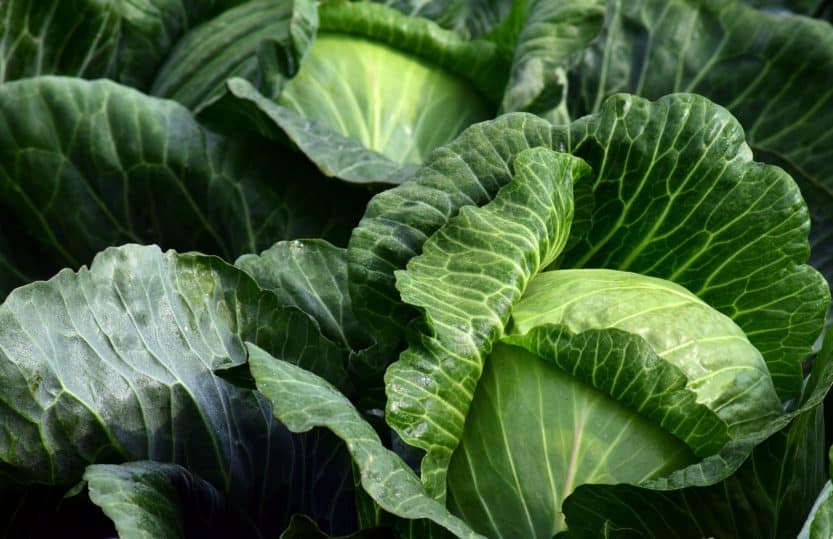
Cabbage is a winter staple that thrives remarkably well in a greenhouse environment. Renowned for its durability, this leafy vegetable can withstand frost and also offers flexibility in terms of varieties—ranging from green and red to savoy and Napa cabbage. Each type brings unique textures and flavors to a diverse range of winter dishes.
When planted in the fall, cabbage takes roughly 70 to 100 days to reach maturity, making a winter greenhouse an ideal environment to protect young seedlings from the cold. The steady temperatures and protection from harsh climates help prevent disease and stress, promoting healthy foliage development. Regular watering and ventilation in the greenhouse can further enhance growth conditions.
Cabbage is also known for its adaptability in the kitchen. Whether used in salads, stews, or fermented dishes like sauerkraut, this vegetable is incredibly versatile and can contribute to hearty winter meals. The ability to grow varied cabbage types in succession allows gardeners to maximize their crop yield and culinary options.
In terms of storage, harvested cabbage can last for weeks when kept in a cool, dark place, making it a practical choice for winter eating. Plus, its high vitamin content—especially vitamin C—makes it an excellent addition to a winter diet, providing crucial nutrients during the colder months when fresh produce availability may be limited.
Carrots
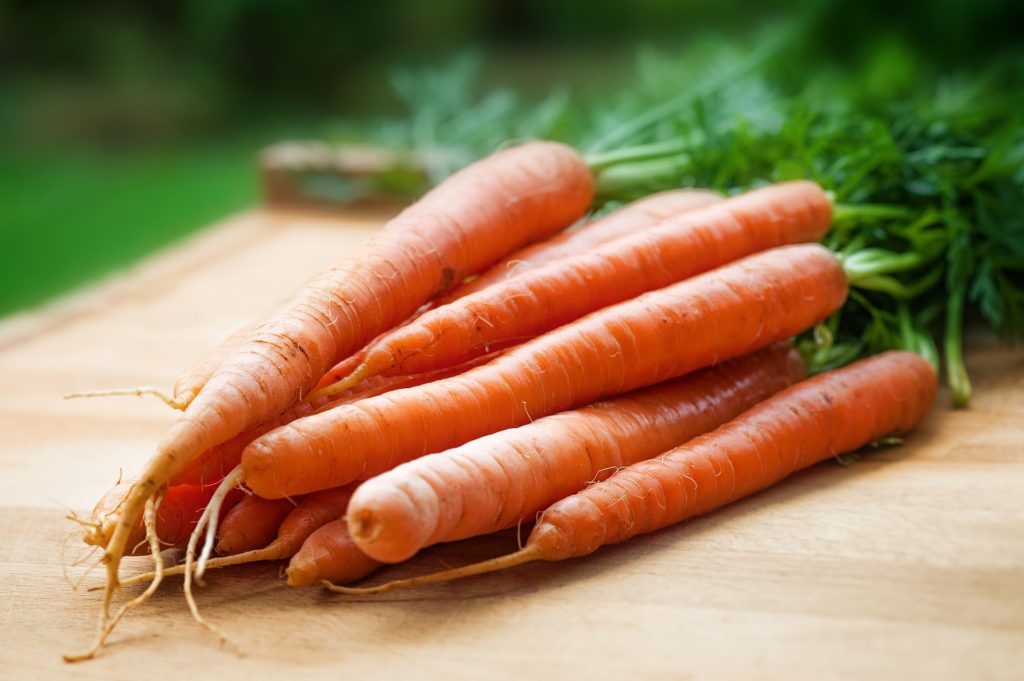
Carrots are an exceptional option for winter greenhouse gardening, offering unique flavors and textures as they endure the cold. Known for their vibrant color and sweetness, carrots develop a deeper flavor profile when exposed to cooler temperatures. This makes winter an ideal time to cultivate this root vegetable under controlled conditions.
When growing carrots in a greenhouse, it’s advisable to choose varieties suitable for winter harvest, such as ‘Nantes’ and ‘Danvers’. These types are often bred for cold tolerance and can be sown in autumn for a late winter harvest. When planted late, carrots benefit from the protection of the greenhouse, with the soil remaining warm enough for germination while allowing the tops to withstand mild frosts.
Carrots require consistent moisture for optimal growth, making the greenhouse environment advantageous. Maintaining a steady moisture level helps develop tender roots, and regular weed control is essential to prevent competition for nutrients. Because carrots are rooted vegetables, spacing them adequately will encourage uniform growth and reduce the risk of disease.
Harvesting carrots throughout the winter is an exciting experience, as they can be pulled fresh whenever needed. Additionally, they can be left in the ground until they’re ready for use, as their cold hardiness allows them to withstand winter conditions, enhancing their sweetness. Furthermore, carrots lend themselves well to an array of culinary applications—from roasting and mashing to raw snacking—which makes them a delightful addition to any winter dish.
Celery

Celery is a nutrient-rich vegetable known for its crisp texture and refreshing taste, making it a fantastic choice for winter greenhouse cultivation. While often considered a spring and summer crop, growing celery in a greenhouse during winter allows gardeners to produce high-quality stalks protected from frost and chilling temperatures. Celery thrives best in cool conditions, preferring temperatures between 55°F and 70°F.
Starting celery from seeds can be challenging, as they require a long growing season of approximately 100 to 130 days. However, with the gentle warmth of a greenhouse, celery seeds can germinate more reliably and quickly since the controlled environment provides consistent moisture, reducing the risks of disease and pests. It’s advisable to begin sowing seeds indoors in late summer or fall to ensure that they are ready for transplanting into the greenhouse by late autumn.
Choosing the right variety is essential for successful growth in winter. Look for cold-tolerant types such as ‘Winter Grown’ or ‘Penguin’ that flourish in cooler temperatures. Celery plants should also have adequate spacing and regular watering, as they require a significant amount of water for optimal growth and crispness.
As a bonus, celery is an excellent source of vitamins A, C, and K, as well as potassium and dietary fiber. Harvesting can be done as the stalks reach maturity, and similar to carrots, they can be cut as needed, allowing for fresh produce throughout the winter months. Adding celery to casseroles, soups, and fresh salads not only enhances flavor but also adds a delightful crunch.
Chard
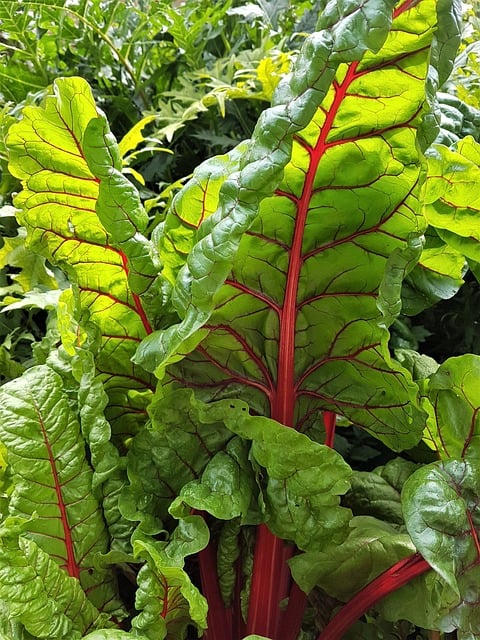
Swiss Chard is another superb candidate for winter greenhouse gardening, celebrated for its vibrant colors and hearty leaves. This leafy green is not only visually appealing but also packed with essential nutrients, including vitamins K, A, and C, magnesium, and iron.
Chard is particularly well-suited for cooler temperatures, thriving in the mild conditions that a greenhouse can provide during winter. It can be sown directly into the soil or started in seed trays and then transplanted. With a short growing cycle of about 50 to 60 days, chard allows for quick returns, making it an excellent choice for continual harvesting through the winter.
What makes chard truly special is its versatility in the kitchen. The leaves can be used in salads, sautéed as a side dish, or added to soups and casseroles, offering a robust flavor and slight earthiness. Meanwhile, the stems, which come in various shades—ranging from bright red to yellow and orange—are also edible and can add a beautiful pop of color to any dish.
One of the advantages of growing Swiss Chard in a greenhouse during winter is its resilience against pests and diseases, especially when compared to other leafy greens. The controlled conditions help keep pests at bay, allowing for healthier plants and more abundant yields. Regularly harvesting the outer leaves promotes continuous growth and production, ensuring a steady supply throughout the winter months.
Chervil
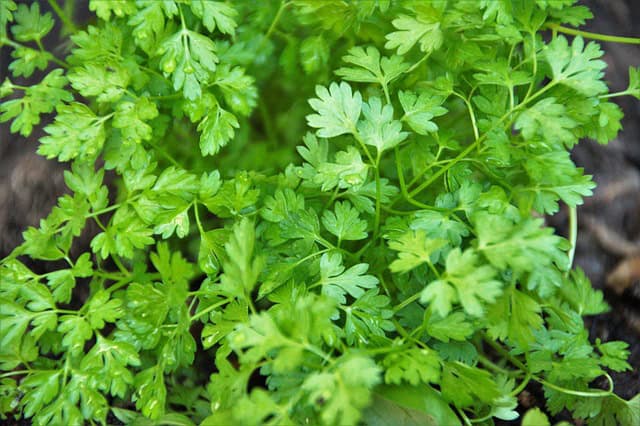
Chervil, often overshadowed by its more popular herb counterparts, is a delightful choice for winter greenhouse cultivation. This delicate herb, known for its feathery leaves and mild anise flavor, is reminiscent of parsley but with a unique twist that adds sophistication to various dishes. Chervil thrives in cooler temperatures, making it an excellent option for winter growth under greenhouse conditions.
The best time to sow chervil seeds is in the fall, as they require a period of cool growth for the seeds to germinate effectively. The mild temperatures of a greenhouse allow for this process, typically resulting in germination within two weeks. Chervil grows best at temperatures between 50°F and 65°F, making winter’s cooler climate ideal for its development.
Harvesting chervil is simple; the leaves can be snipped off as needed, and the plant will continue to grow, providing a continuous supply throughout the winter. When using chervil in the kitchen, it is best added towards the end of cooking, as prolonged heat can diminish its delicate flavor. It elevates dishes like soups, stews, and sauces, contributing a refined taste that complements other herbs.
Additionally, chervil’s unique flavor profile—often described as a mix of parsley and tarragon—makes it an excellent choice for fresh salads, dressings, and seafood dishes. Growing chervil in the winter not only diversifies the herb garden but also enhances culinary experiences with its fragrant and subtle essence.
Claytonia
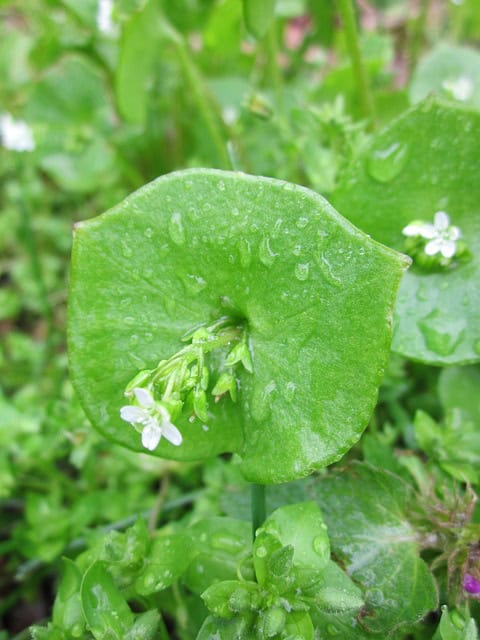
Also known as miner’s lettuce or claytonia, this leafy green is often overlooked in traditional winter gardens, yet it thrives remarkably well in greenhouse settings. Originating from the Pacific Northwest, Claytonia is known for its succulent leaves and unique, slightly sweet flavor. This low-growing plant prefers cooler climates, making a greenhouse an ideal location for its cultivation during the winter months.
Claytonia grows best when temperatures are kept between 45°F and 65°F, which are easily maintained in a greenhouse environment. Its rapid germination—within 7 to 14 days—allows for prompt harvesting, typically just 4 to 6 weeks after sowing. Sowing can occur at the beginning of winter, which enables gardeners to enjoy fresh greens before spring arrives.
The growth habit of Claytonia is particularly appealing, as it features tender, heart-shaped leaves that can be eaten raw in salads or lightly sautéed as a side dish. Furthermore, Claytonia is rich in vitamins A and C, providing a healthy boost during the colder months. The plant can also survive light frosts, enhancing its sweet flavor profile. This adaptability makes it a wonderful addition to any winter greenhouse.
In addition to its culinary uses, Claytonia can attract pollinators when its flowers emerge in spring, promoting biodiversity in the greenhouse environment. Including Claytonia in your winter gardening plans not only enriches your diet but also supports a healthy ecosystem for future crops.
Dandelion
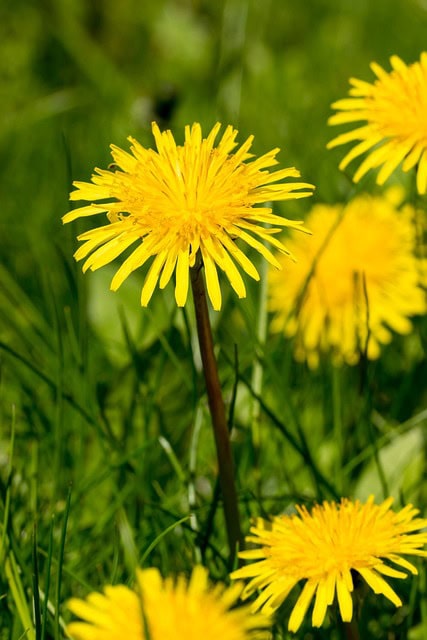
Dandelion greens are much more than a pesky weed; they offer a wealth of nutrition and flavor that is perfect for winter greenhouse gardening. Renowned for their distinctively bitter taste, dandelion greens can be harvested in various stages—from young, tender leaves to mature, robust ones. When grown in a greenhouse, dandelions can thrive throughout the winter, providing a fresh source of vitamins and minerals even in the coldest months.
Dandelions are incredibly hardy and can withstand freezing temperatures, making them well-suited for winter cultivation. Sowing seeds directly in the greenhouse in late fall or early winter allows for continuous harvesting. Dandelion greens usually take about 60 days to mature, but younger leaves can be harvested sooner for salads or cooking.
Rich in vitamins A, C, and K, as well as minerals like iron and calcium, dandelion greens are a powerhouse of nutrition. They can be enjoyed in salads, sautéed with garlic, or incorporated into soups for a hearty winter dish. Their slightly bitter flavor can be complemented with a splash of lemon juice or a sprinkle of salt to create a delightful balance.
Another sustainable aspect of growing dandelions is their ability to thrive in less-than-ideal soil conditions, making them a low-maintenance choice for greenhouse growers. As an added bonus, dandelion flowers can also be harvested (though not in the winter) to make delightful dandelion tea or wine, providing additional uses for this versatile plant.
Escarole
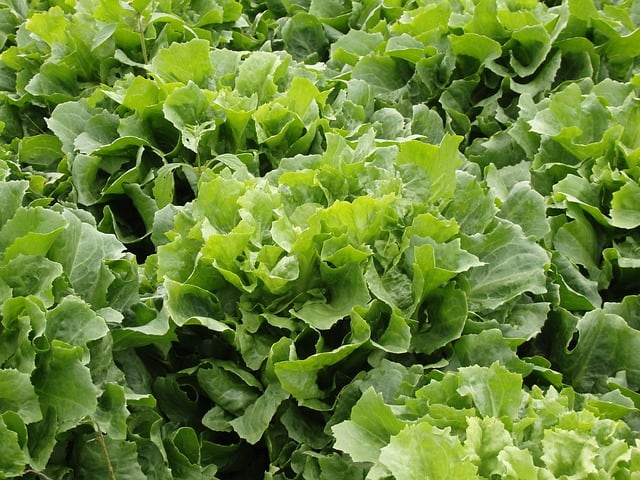
Escarole, a member of the chicory family, is a leafy green that flourishes in the cooler months and is ideally suited for winter greenhouse cultivation. Known for its slightly bitter and robust flavor, escarole is a versatile green that can lend itself to a variety of culinary applications. By growing it in a greenhouse, gardeners can enjoy fresh escarole throughout the winter while benefiting from its nutritional value.
Ideal growing temperatures for escarole range from 50°F to 70°F, making it a comfortable fit in a greenhouse environment. Seeds can be sown directly into soil beds or started in trays for transplanting. Escarole typically matures in approximately 75 to 90 days, allowing for ample time to enjoy its harvest before spring.
Escarole leaves can be enjoyed raw in salads, where their hearty texture provides a wonderful contrast. Alternatively, when cooked, they soften and develop a milder flavor, making them perfect for soups, stews, or sautéed dishes. Its slightly bitter taste pairs well with rich foods, like meats and creamy dressings, adding depth to winter meals.
Importantly, escarole is a good source of fiber, vitamins A, C, and K, as well as folate. This nutritional profile contributes to a healthy winter diet, supporting immune health and overall well-being during the colder months. Furthermore, escarole’s ability to tolerate cooler temperatures means it can withstand light frosts without losing its flavor or quality.
When incorporating escarole into a winter greenhouse growing plan, consider rotating it with other crops to optimize soil health and mitigate potential pest issues. Furthermore, escarole can be combined with other winter greens to create a diverse and visually appealing garden space.
Kale
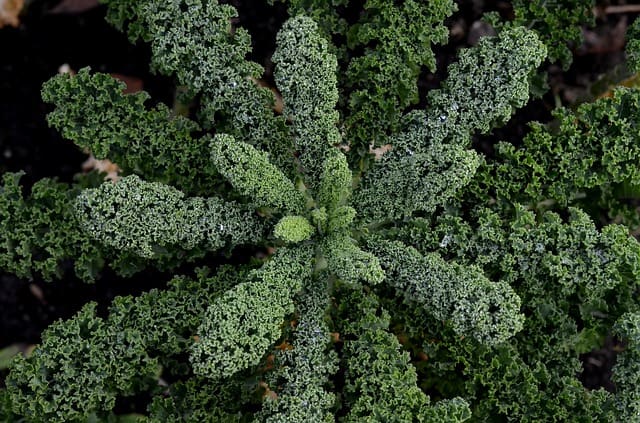
Kale is a winter superstar, cherished for its hardiness and unparalleled nutritional profile. This leafy green is well-known for its robust texture, vibrant color, and numerous health benefits, making it an ideal choice for winter greenhouse cultivation. It can withstand temperatures as low as 20°F, allowing gardeners to cultivate multiple kale varieties in their greenhouses—even in challenging winter conditions.
One of the best things about growing kale in winter is that it actually becomes sweeter after exposure to frost. The cold prompts the plant to convert its stored starches into sugars, enhancing its flavor and making it more enjoyable in a variety of dishes. With a growth timeframe of 55 to 75 days for most varieties, gardeners can expect to begin harvesting their kale in late winter.
Kale’s versatility in the kitchen is unrivaled. From salads to smoothies, soups to stir-fries, this nutrient-dense vegetable fits effortlessly into countless dishes. Not only is kale rich in vitamins A, C, and K, but it also boasts a high antioxidant content, supporting immune function during the colder months.
Maintaining optimal growing conditions in a greenhouse—adequate light, moisture, and protection from pests—will ensure continued production. Consider intercropping kale with faster-growing greens to maximize space while ensuring a continuous harvest. Kale’s resilience under winter conditions means that successional planting can easily yield a steady supply of fresh greens throughout the season.
Kohlrabi

Kohlrabi, or “cabbage turnip,” is a unique winter vegetable that deserves a spot in your greenhouse. Renowned for its striking bulbous stem and mild flavor, kohlrabi is a versatile vegetable that can be enjoyed both raw and cooked. This cruciferous vegetable grows exceptionally well in cooler temperatures, with an optimal range of 50°F to 70°F, making it perfect for winter cultivation.
Typically sown directly into the soil or started in trays, kohlrabi takes approximately 50 to 80 days to reach maturity. Its rapid growth cycle allows for multiple plantings throughout the winter months, ensuring a continuous harvest. The bulb can be harvested when it is about the size of a tennis ball for the best flavor and tenderness, usually during late winter.
Kohlrabi can be used in various culinary applications. When eaten raw, its crunchy texture makes it a delightful addition to salads, slaws, and veggie platters. Alternatively, kohlrabi can be roasted or mashed, lending a sweet flavor that pairs beautifully with spices and herbs. Additionally, both the leaves and the bulb are edible, promoting a zero-waste approach in the kitchen.
As kohlrabi grows, it has relatively few pest issues, particularly in a greenhouse environment. Regular maintenance, such as watering and thinning seedlings, can lead to healthier, more robust plants. Its unique shape and interesting flavor make kohlrabi a conversation starter at the dinner table, inviting culinary creativity even in the dead of winter.
Leeks
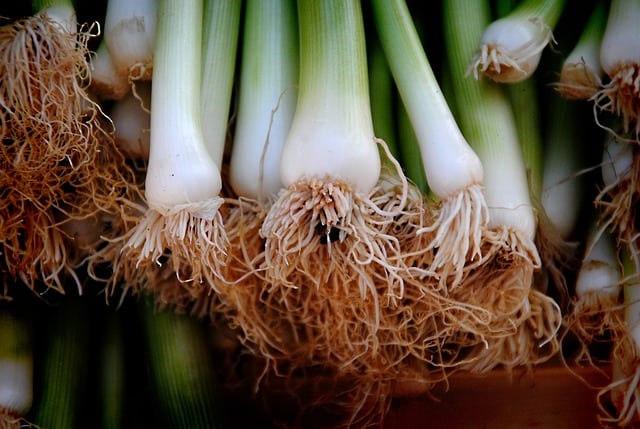
Leeks are an exceptional choice for winter greenhouse gardening, bringing a mild, onion-like flavor to a variety of dishes. These versatile alliums thrive in cooler temperatures and can be harvested throughout winter, providing a steady supply of fresh flavor to enhance meals. With a long growing season of approximately 120 to 150 days, effective planning and timing for sowing are essential for successful yields.
Sowing leeks in late summer or early fall makes for a perfect winter harvest. They can be started indoors and transplanted into the greenhouse, where they benefit from the controlled environment that protects them from frost and pests. The rich, moist soil of a greenhouse helps foster the ideal growing conditions that leeks crave, enabling them to reach their full potential.
Leeks are particularly well-suited for cooking, as their subtle sweetness develops when heated. They are a fantastic base for soups, stocks, and stews or can be roasted and served as a side dish. Because leeks have a layered structure, they can also be stuffed and baked, presenting a unique twist on traditional winter recipes.
Nutritionally, leeks are an excellent source of vitamins A, K, and C, along with dietary fiber and antioxidants. Their high water content and low-calorie profile make them a healthy choice for winter meals, as they can add flavor without adding excessive calories.
In the greenhouse, leeks can sometimes be susceptible to root rot if overly watered, so maintaining proper drainage and moisture levels is crucial. Regularly checking for pests and diseases will ensure a healthy supply of leeks throughout the season. Their versatility and ability to pair well with many flavors make leeks a valuable addition to any winter garden.
Lettuce
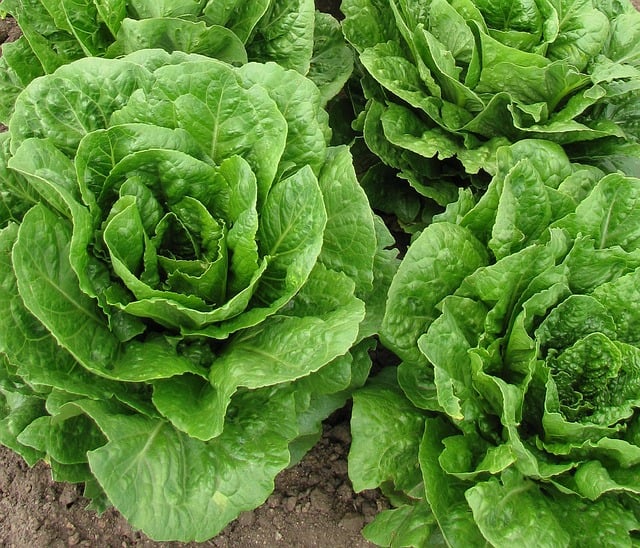
Lettuce is a quintessential winter greenhouse crop, favored for its crisp texture and diverse varieties. With the ability to thrive in cooler temperatures, lettuce can be sown in the greenhouse throughout winter, allowing for a steady supply of fresh greens. Ideal varieties for winter growing include butterhead, romaine, and loose-leaf types, all of which possess varying degrees of cold tolerance.
Typically, lettuce seeds germinate within 7 to 14 days, making them a quick and rewarding crop. In a greenhouse setting, temperatures ideally should range between 40°F and 60°F for optimal growth. This controlled environment not only protects lettuce from hard frosts but also helps minimize pest issues, making winter cultivation more manageable.
Lettuce can be harvested as baby greens for tender salads or allowed to fully mature for larger heads. Its versatility knows no bounds; it can be used in fresh salads, sandwiches, or wraps, and pairs excellently with various dressings and toppings. Moreover, incorporating different varieties can enhance the visual appeal and texture of winter salads, offering a delightful mix of flavors and colors.
Nutritionally, lettuce is low in calories while providing vitamins A and K, making it a great choice for those looking to maintain a healthy diet. The refreshing crunch of freshly harvested lettuce brings a welcomed contrast to traditional warm winter cuisines, encouraging healthy eating habits during the season.
Mâche
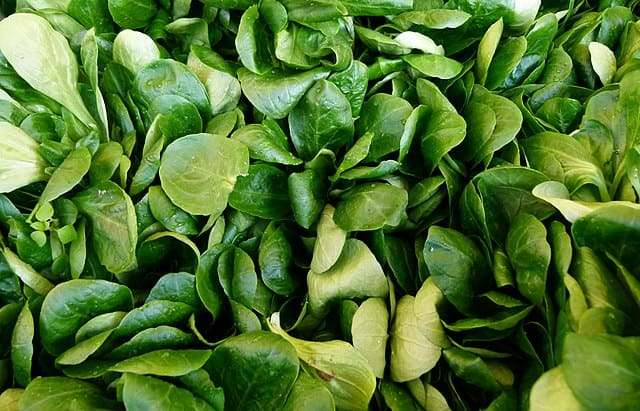
Mâche, also known as lamb’s lettuce or corn salad, is an excellent crop for winter greenhouse gardening. This hardy green, with its tender leaves and nutty flavor, thrives in cool conditions, making it perfect for winter cultivation. Mâche has a unique ability to withstand frost, often allowing growers to harvest it even in very low temperatures.
Sown as a direct seed in the greenhouse in late fall or early winter, mâche generally takes around 30 to 50 days to mature. Its low-growing nature means it can be sown closely together, maximizing space in your greenhouse while providing a substantial yield. The subtle, sweet flavor of mâche makes it a fantastic addition to salads, offering a smooth texture that complements rougher greens beautifully.
Nutritionally, mâche is a powerhouse packed with vitamins A and C, iron, and omega-3 fatty acids, making it a superfood for winter diets. Its rich nutrient profile makes it not only a delicious addition to meals but also a valuable one for overall health.
Incorporating mâche into your winter greenhouse plan can enhance biodiversity within your garden. It attracts beneficial insects and can be grown alongside other greens without crowding them. Given its fast-growing nature and ability to thrive in lower light conditions, mâche is ideal for a greenhouse setting, offering abundant harvests throughout winter.
Mizuna
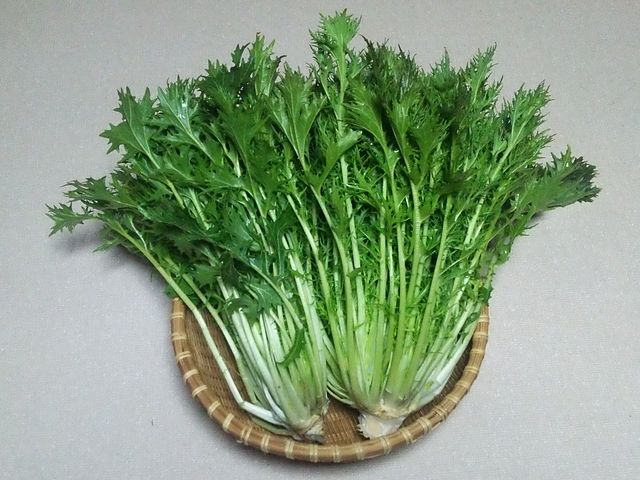
Mizuna is a fast-growing leafy green that adds a Japanese twist to winter greenhouse gardening. Known for its mildly peppery flavor and unique serrated leaves, mizuna holds up well in cool temperatures, making it an excellent candidate for cold-season growth. With a maturity cycle of about 30 to 45 days, you can quickly reap the rewards of this nutritious crop.
Sowing mizuna can occur directly in the greenhouse or started indoors; however, it is best planted in well-drained soil with plenty of organic matter to support healthy growth. This green thrives at temperatures between 50°F and 65°F, making it an ideal option for winter cultivation where temperatures can be easily managed.
Mizuna’s culinary applications are as diverse as its growth. It is delicious in salads, where it adds a pleasant zest, and can also be sautéed, stir-fried, or added to soups and stews for an extra kick. Its unique flavor profile pairs well with other winter vegetables, offering a fresh and invigorating element to cold-weather dishes.
Rich in vitamins A, C, and K, and packed with antioxidants, mizuna is a nutritious addition to any winter meal. Furthermore, its quick-growing nature allows for succession planting throughout the winter, providing continuous harvests that keep winter menus exciting and full of flavor.
Additionally, mizuna plants can be interplanted with other winter greens, helping to maximize greenhouse space and minimize the risk of pest infestations. This adaptability makes it an attractive option for winter gardening, ensuring there’s always something fresh and nutritious at your fingertips.
Mustard Greens

Mustard greens are fast-growing, flavorful greens that thrive in winter greenhouses, making them a popular choice for gardeners looking to maximize their produce during the cold season. Known for their peppery taste and vibrant green leaves, mustard greens can add a kick to salads, stir-fries, and soups. Varieties such as ‘Southern Giant Curled’ and ‘Green Wave’ are particularly well-suited for cooler climates, thriving in temperatures as low as 30°F.
The cultivation of mustard greens in a greenhouse allows for year-round growth, especially during winter. These greens typically germinate within 5 to 10 days and can be harvested in as little as 30 days, providing quick returns for winter gardeners. Their ability to grow quickly means that you can often achieve multiple harvests throughout the season.
Nutritionally, mustard greens are a powerhouse, rich in vitamins A, C, and K, as well as minerals such as calcium and iron. They are also high in fiber, making them a valuable addition to a healthy winter diet. When cooked, mustard greens develop a tender texture and a slightly milder flavor, perfect for sautéing with garlic or adding to hearty soups.
Mustard greens can also serve as a great companion plant in your greenhouse, helping to repel pests when planted alongside other vegetables. Their adaptability and resilience in the cold make them a compelling choice for supporting biodiversity in your winter garden.
Onions

Onions are a staple in many kitchens, and they can thrive in a greenhouse during winter, particularly if grown from seedlings or sets. Winter is an excellent time to establish onion crops that can be harvested in the spring and summer. Varieties like ‘Walla Walla’ and ‘Texas 1015’ are sweet onions that are favored for their robust flavor, while storage onions such as ‘Yellow Granex’ can be grown for long-term use.
By planting onion sets in well-drained, nutrient-rich soil, you can successfully cultivate onions even when external conditions are less than ideal. Ideal growing temperatures for onions vary from 50°F to 70°F, making greenhouses an excellent environment to control these conditions. Onions typically require a longer growing season, averaging around 100 to 120 days; however, with winter plantings, you can manage your crops effectively by utilizing the greenhouse’s protection from harsh weather.
Incorporating onions into your winter meals provides a host of culinary possibilities. They can be used fresh in salads, roasted, sautéed, or even caramelized to bring out their natural sweetness. Onions are also rich in antioxidants, making them a healthful addition to any plate.
One of the benefits of growing onions in the greenhouse is their minimal pest issues, especially when compared to other crops. Regular maintenance such as watering and monitoring for fungal diseases will ensure healthy bulb development. As they approach maturity, you can enjoy the process of watching them grow, knowing their versatility will enhance your winter cooking endeavors.
Parsnips
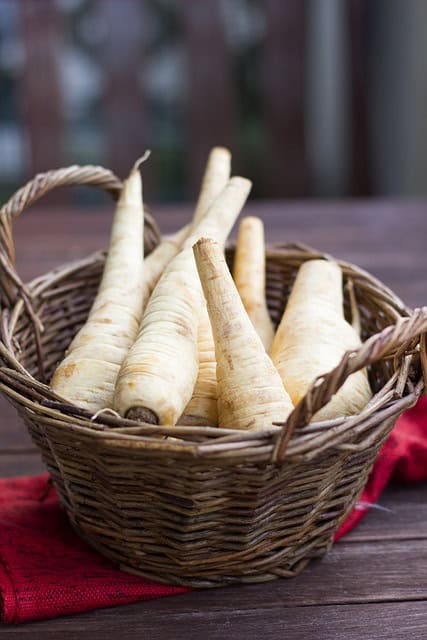
Parsnips are an often-underappreciated winter vegetable that can thrive remarkably well in a greenhouse setting. These root vegetables develop their best flavor after exposure to frost, which makes growing them in a controlled greenhouse environment an excellent strategy for achieving sweeter roots. With a growing season of approximately 120 days, parsnips benefit from the mild winter conditions found inside a greenhouse.
Sowing parsnips in late summer to early fall allows them to germinate and establish roots as temperatures begin to cool. They are best planted in deep, well-drained soil to support their long taproots, which can grow quite large. Once established, parsnips are relatively low-maintenance, requiring consistent moisture but not much else, as they are quite resistant to pests.
The culinary uses for parsnips are diverse. They can be roasted, mashed, or used in soups and stews, where their natural sweetness adds depth to winter meals. Nutritionally, parsnips are high in fiber, vitamins C and K, and provide folate, making them a valuable addition to a balanced diet during the winter months.
Parsnips can also enhance your greenhouse’s biodiversity by providing a habitat for beneficial insects. Their flowering tops attract pollinators in the spring, adding to the overall health of your greenhouse ecosystem. Plus, their hardy nature allows for resilience throughout the winter months, ensuring you’ll have access to nutritious and flavorful vegetables even when most other crops are dormant.
Parsley

Parsley is a versatile herb that thrives in cool conditions, making it an excellent candidate for winter greenhouse cultivation. This biennial plant is often treated as an annual and is known for its bright green, curly or flat leaves that can enhance a variety of dishes. The cold-weather resilience of parsley allows it to grow steadily in your greenhouse, where temperatures can be easily maintained between 50°F to 70°F.
Starting parsley from seeds requires patience, as germination can take between 14 to 28 days. However, once established, parsley is relatively low-maintenance. It can be grown in pots or directly in the ground, and regular harvesting encourages the plant to produce new growth. It’s ideal to keep the soil consistently moist but not overwatered, as parsley prefers a well-draining medium.
The culinary applications for parsley are immense; it can be used as a garnish, a component in salads, or even blended into sauces like chimichurri. Nutritionally, parsley is rich in vitamins A, C, and K, along with minerals like iron and potassium, which makes it beneficial for overall health. The flavor is bright and refreshing, providing a delightful contrast to richer winter dishes.
Growing parsley in your greenhouse also enhances biodiversity, attracting beneficial insects and pollinators when it flowers in its second year. Its resilience and adaptability make parsley an ideal choice for adding flavor and nutrition to your winter harvest.
Peas
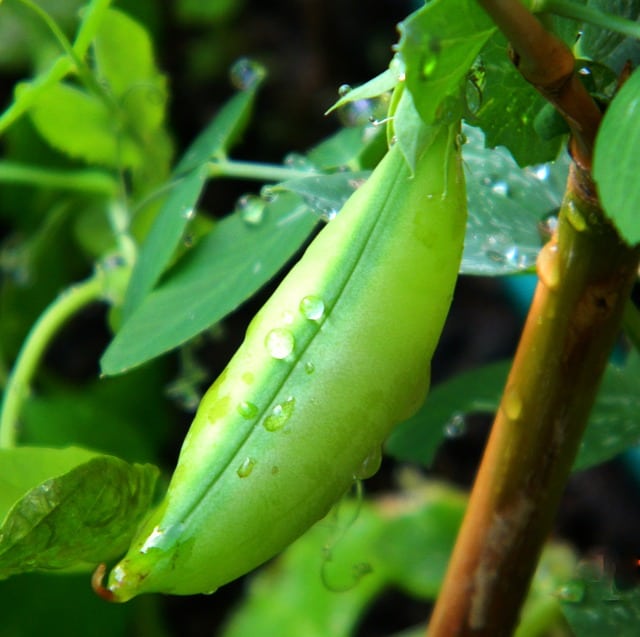
Peas are a charming and productive addition to any winter greenhouse garden, providing freshness and sweetness that can brighten up winter meals. While traditionally grown in spring, certain varieties, like snow peas and sugar snap peas, can thrive when planted in early winter under the protection of a greenhouse. These varieties love cooler temperatures, ideally thriving in 45°F to 75°F, making a greenhouse the perfect environment to cultivate them during winter.
Planting peas directly into the greenhouse soil or containers will yield budding green plants within a few weeks, often within 7 to 14 days. They can benefit from support structures, such as trellises or stakes, as they climb, optimizing vertical space in your greenhouse. Regular watering and soil maintenance are crucial during growth to produce sweet, tender pods.
Peas are incredibly versatile in the kitchen, whether fresh, steamed, or added to stir-fries. Their inherently sweet flavor makes them a delightful addition to a variety of dishes. Peas are also nutritional powerhouses, rich in vitamins A, C, K, and several B vitamins, as well as fiber and protein, offering both health benefits and culinary enjoyment during the winter months.
Moreover, growing peas in your greenhouse can improve soil health. As legumes, peas fix nitrogen in the soil, benefiting subsequent crops you may choose to plant later in the season. Their ability to thrive in the cooler temperatures of winter makes them a delightful and productive choice for winter gardeners.
Potatoes
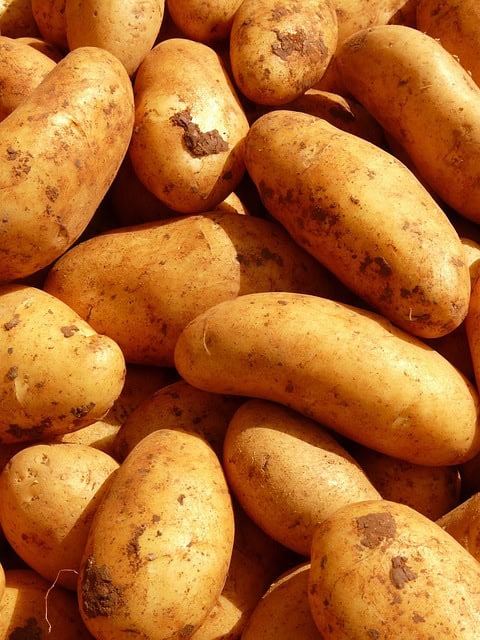
Potatoes, a beloved staple vegetable, can surprisingly thrive in a greenhouse during winter when properly grown. While typically associated with spring planting, gardeners can enjoy early potato crops by using techniques like “chitting” (pre-sprouting tubers) before planting. Varieties suited for early harvest, such as ‘New Potatoes’ or ‘Fingerling Potatoes’, can yield delicious results in a controlled greenhouse environment.
When growing potatoes in winter, it is best to opt for a greenhouse that maintains consistent temperatures between 40°F to 70°F. Tubers can be planted in containers, raised beds, or directly in greenhouse soil. Be sure to use well-draining soil with plenty of organic matter, as potatoes are prone to rot if left in overly damp conditions. The tubers typically take about 70 to 90 days to mature.
The versatility of potatoes in the kitchen cannot be overstated. From mashed potatoes to roasted wedges and hearty winter casseroles, they serve as a comforting base for many dishes. Potatoes are also rich in essential nutrients, including vitamins C and B6, potassium, and dietary fiber, making them a staple for a balanced diet.
In addition to providing versatile culinary options, potatoes can help improve soil quality by enhancing its structure and aeration. When the growing season ends, the remnants in the soil will decompose and enrich it for future crops.
Radicchio
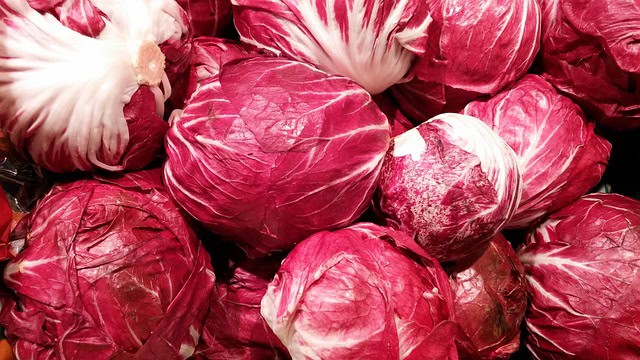
Radicchio is a stunning winter crop known for its striking colors and slightly bitter, spicy flavor that adds depth to salads and dishes. This leafy vegetable, a member of the chicory family, enjoys cooler temperatures and can thrive in a greenhouse during winter months. The most popular variety, Radicchio di Verona, develops beautiful burgundy leaves with distinct white veins—a visual treat that enhances any dish.
Radicchio can be planted from seed directly in the greenhouse in late fall or early winter, with a typical germination period of around 7 to 14 days. It grows best in well-draining, nutrient-rich soil, ideally with a pH between 6.0 and 6.8. Careful monitoring of humidity and temperature within the greenhouse is essential, as radicchio prefers a range of 45°F to 65°F for optimal growth.
Culinarily, radicchio is incredibly versatile. It can be enjoyed raw in salads, where its bitterness can be balanced with sweet dressings or mixed with milder greens, or it can be grilled, roasted, or sautéed to mellow its flavor. Rich in antioxidants and vitamins K and C, radicchio boasts health benefits that support overall wellness.
Growing radicchio during winter not only provides delicious greens but also enhances the aesthetic appeal of your greenhouse. The vibrant colors and unique shapes bring life to an otherwise subdued winter landscape, turning your greenhouse into a thriving haven of botanical beauty.
Radishes
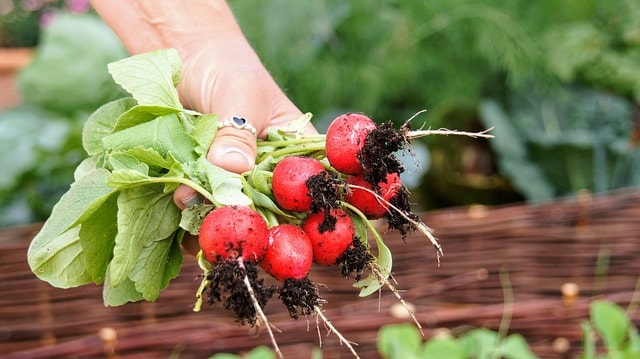
Radishes are a fast-growing root crop that can flourish in a winter greenhouse, making them a go-to choice for gardeners looking for quick results. These hardy vegetables come in a variety of shapes, sizes, and colors, from classic red globes to graceful white and black varieties. Their crisp texture and peppery flavor add a refreshing contrast to winter salads and dishes.
Radishes can be sown directly into the greenhouse soil or in pots, typically germinating in just 5 to 10 days. One of the advantages of growing radishes in winter is their ability to withstand frost, adding to their reliability as a greenhouse crop. Ideal temperatures for radish growth range from 50°F to 70°F, making the controlled environment of a greenhouse perfect for cultivating this quick crop.
Not only do radishes add a crunch to salads, but they can also be roasted, grilled, or pickled, allowing for diverse culinary applications. Nutritionally, radishes are low in calories but high in vitamins C and B, making them an excellent addition to a healthy winter diet. Their high water content helps keep meals light and hydrating during the colder months.
Furthermore, radishes can help improve soil health—when planted, they can break up compacted soil and enhance aeration. Their quick growing cycle ensures you have continuous harvests throughout winter, allowing for multiple plantings and a steady supply of fresh produce.
Sorrel
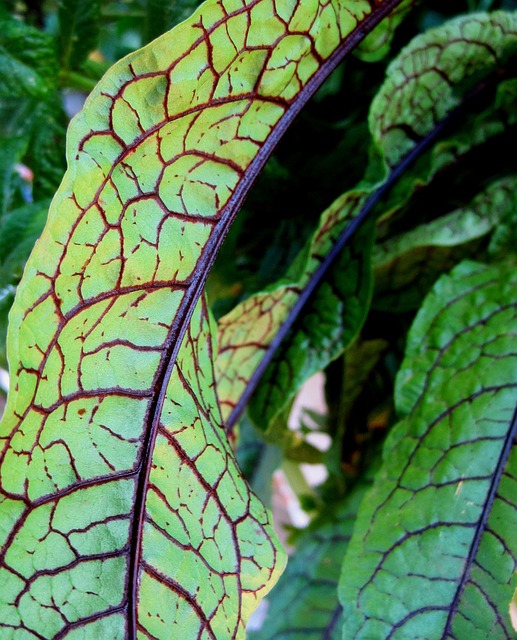
Sorrel is a unique green herb that stands out with its tangy, citrus-like flavor, making it a delightful addition to winter greenhouse gardening. This perennial herb can be grown year-round in a greenhouse and flourishes in cool temperatures, making it an ideal choice for winter cultivation. Varieties such as French Sorrel and Garden Sorrel are popular for their distinctive flavors and ease of growth.
Sorrel can be seeded directly in a greenhouse or started indoors before transferring to the garden beds. It typically germinates within 7 to 14 days and requires well-drained, fertile soil to thrive. Optimal growing conditions for sorrel are between 60°F and 70°F, but it still adapts well to cooler greenhouse temperatures.
The culinary flexibility of sorrel is impressive; its bright, tart flavor enhances soups, sauces, and salads alike. It can serve as a refreshing contrast to rich dishes and pairs well with creamy elements, making it a favorite in gourmet cooking. Packed with vitamins A and C, sorrel also boasts health benefits, including aiding digestion and promoting healthy skin.
In the greenhouse, sorrel contributes to biodiversity by attracting beneficial insects. Its unique flavor profiles can inspire creativity in the kitchen during winter, urging cooks to experiment and innovate with fresh herbs in their recipes.
Spinach
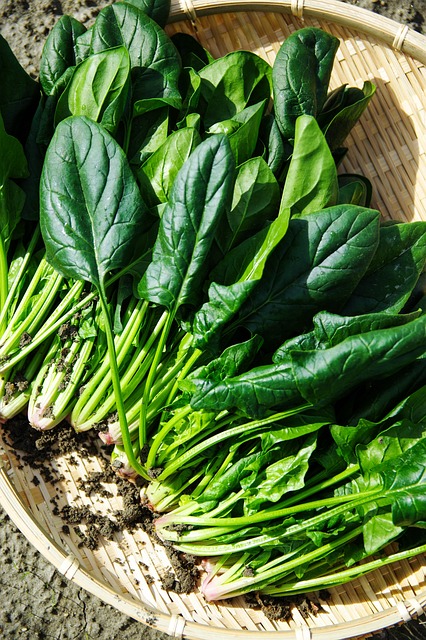
Spinach is a hardy, nutrient-dense leafy green that thrives in cool conditions, making it an ideal crop for greenhouse cultivation during winter. This versatile vegetable is known for its high iron and nutrient content, making it a favorite among health-conscious eaters. Spinach can be sown directly into the greenhouse soil or started in trays, and it germinates relatively quickly, typically within 7 to 14 days.
When growing spinach in a winter greenhouse, it’s crucial to maintain a steady temperature between 50°F and 70°F. Spinach can tolerate frost, and the cooler temperatures can even enhance its flavor, producing sweeter leaves. Regular watering is essential, as spinach prefers consistently moist but well-drained soil.
Culinarily, spinach offers a wealth of possibilities. It can be enjoyed raw in salads, cooked in stir-fries, blended into smoothies, or incorporated into a variety of dishes. Additionally, spinach is rich in vitamins A, C, and K, calcium, and antioxidants, making it a superstar in any winter diet. The ability to continuously harvest young leaves throughout the season allows for sustained production and a fresh supply of greens.
Growing spinach in your greenhouse adds not only nutritional value but also visual appeal. The lush green leaves provide a refreshing contrast to the often barren outdoor landscapes of winter, ensuring your greenhouse remains a vibrant and welcoming space.
Tatsoi
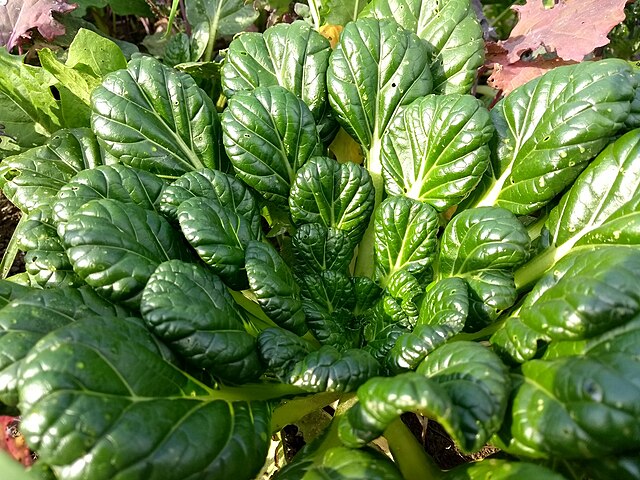
Tatsoi, also known as spoon mustard, is a leafy green that is perfect for winter greenhouse gardening, thanks to its adaptability to cold temperatures. With its dark green rosettes and spoon-shaped leaves, tatsoi offers a unique flavor profile—a mild richness that can enhance salads, stir-fries, and soups. This cruciferous vegetable thrives in temperatures as low as 20°F, and within a greenhouse, conditions can be optimized to support its growth.
Sowing tatsoi seeds directly in the greenhouse should be done in late fall or early winter, as the germination period is fairly quick—typically between 7 to 14 days. It requires well-draining soil with plenty of organic matter and consistent moisture. The crowded, compact growth form of tatsoi allows you to maximize space effectively, making it an excellent choice for smaller greenhouses.
The culinary applications for tatsoi are diverse; it can be used fresh or cooked, maintaining its tenderness even when sautéed. The mild flavor pairs especially well with bold dressings or robust seasonings, making it an excellent addition to winter salads and dishes. Nutritionally, tatsoi is an excellent source of vitamins A, C, and K, alongside minerals like calcium and iron.
Moreover, tatsoi can serve as a beneficial cover crop when allowed to flower in its second year, attracting pollinators and enhancing biodiversity in your garden. Its resilience to cold makes it a practical and delicious choice throughout the winter season.
Turnips
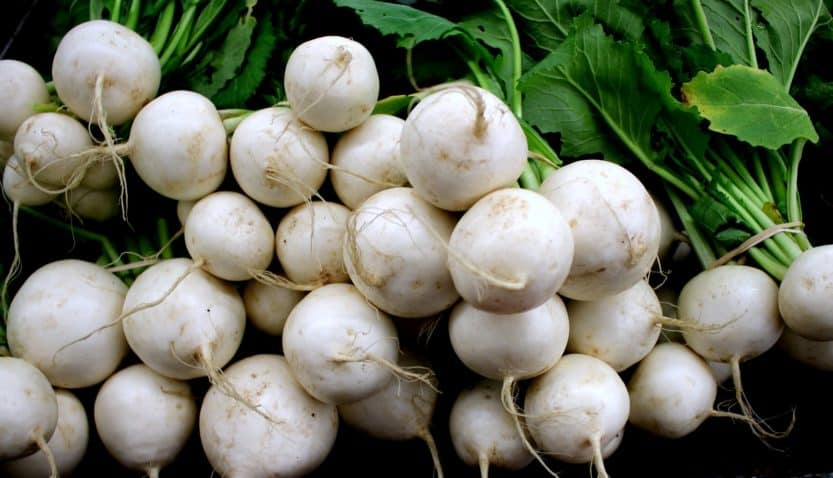
Turnips are a surprisingly versatile root vegetable that can be grown successfully in a winter greenhouse. They are hearty and capable of thriving in cooler conditions, and both the roots and tender greens are edible and highly nutritious. Varieties such as ‘Hakurei’ and ‘Purple Top White Globe’ are well suited for winter growth, providing a satisfying harvest within just 50 to 70 days after sowing.
Turnip seeds can be sown directly into the greenhouse in late summer or early fall, where they germinate quickly—usually within 7 to 14 days. They thrive in well-draining, rich soil and require consistent moisture for optimal root development, making it essential to keep an eye on irrigation levels during the winter months for best results.
The culinary possibilities with turnips are numerous. Their mild flavor can be enjoyed raw in salads, while cooking brings out earthy notes that complement a range of dishes, from stews and soups to roasted vegetable medleys. Additionally, turnip greens are delectable and packed with nutrients, making them a flavorful option for sautéing or incorporating into stir-fries.
Nutritionally, turnips provide essential vitamins such as C and K and are an excellent source of fiber, supporting digestive health and overall well-being. Moreover, their growth can improve soil health; the roots help aerate the soil, making it beneficial for future crops planted in the same area.
Watercress
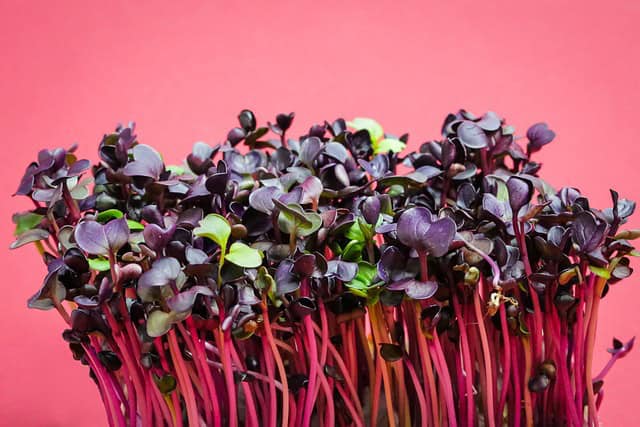
Watercress (Nasturtium officinale) is for its peppery flavor and rich nutrient profile. It thrives in cool conditions, ideally growing in temperatures ranging from 50°F to 70°F, making it an optimal candidate for winter greenhouse cultivation. Watercress can be grown in pots, trays, or even shallow containers filled with soil, allowing for flexibility in your greenhouse setup.
One of the most appealing aspects of growing watercress in winter is its rapid growth rate; seeds typically germinate within 7 to 12 days. Given its preference for a consistently moist to wet environment, it’s crucial to maintain adequate moisture levels. Whether you choose to incorporate a small hydroponic system or simply keep the soil consistently damp, watercress benefits from a well-draining medium that emulates its natural habitat.
Culinarily, watercress is incredibly versatile. Its fresh, peppery flavor pairs well with salads, soups, and sandwiches, and it can serve as a garnish that elevates the overall presentation of a dish. Beyond its culinary uses, watercress is revered for its health benefits. It is rich in vitamins A, C, and K, and contains essential minerals like calcium and iron, contributing to improved immune function and bone health.


